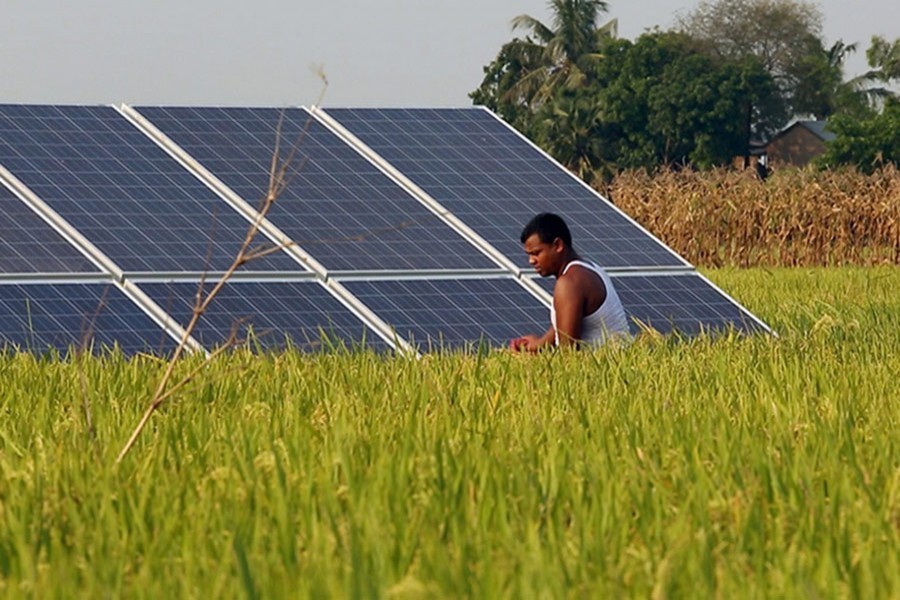Commercial operation of a 35mw solar power plant recently in Manikganj has brought to the fore the potential of solar power as well as the prospect of expanding the coverage of grid electricity. It got reported that the plant, a Bangla-China joint venture project established at Shibalaya Upazila of the district with financial support from the Asian Development Bank (ADB), has already started supplying electricity to the national grid. The state-owned Bangladesh Power Development Board (BPDB) will purchase electricity from this independent power producer (IPP) under a 20-year power purchase agreement (PPA). Earlier, 4 IPP projects - 50MW (AC) Solar Park Gauripur, Mymensingh, 8MW Solar Park in Panchagarh, 20MW (AC) Solar Park Teknaf Upazila, Cox's Bazar and 3MW Grid-connected PV Power Plant at Sharishabari in Jamalpur went into operation. Lately, last week, an agreement has been inked between the state-owned Electricity Generation Company of Bangladesh Limited (EGCB) and Marubeni Corporation of Japan for implementing a 100MW solar power plant at Sonagazi in Feni.
These, no doubt, are mentionable steps to increase power generation - that too through raising the share of renewable energy in the country's power generation. The country's Power System Master Plan (PSMP) has set a target to reach renewable energy's share to 10 per cent of total power generation capacity (2470MW) by the current year. The major focus is obviously on exploiting the potential of solar energy to achieve the goal. However available data show the country now has a generation capacity of 20,595MW from conventional sources while power from renewable sources is lagging far behind at 700.61MW - around 3.0 per cent of the total generation capacity. So, reaching the target is quite unlikely to happen in the period meant to achieve so. Energy experts, however, say that although reaching the target is rather ambitious and not likely to materialise in the pandemic time, the country would scale up renewable energy production manifold in the near future, given that there is already an organised move to set up plants, particularly solar plants, and the government too is committed to encouraging such ventures.
It may be noted that an organisation named International Solar Alliance (ISA) has been set up last year aimed at building a network to help tropical countries boost their use of solar power. A well taken initiative, this is going to help many countries to meet their grid power deficit through increased application of solar devices for meeting mounting home and industrial demands. As for Bangladesh, one of the lead countries to make the best of solar energy, especially through rooftop solar power, it can benefit immensely from the ISA initiative in applying innovative devices at affordable costs.
Bangladesh is already a big name in off-grid solar home system. Now, with increased production of solar energy aimed at increasing the grid capacity, it is expected to meet the rising energy demand - not only in households without grid connectivity but also in mills and factories which generate their own power to meet operational needs at a high cost.


